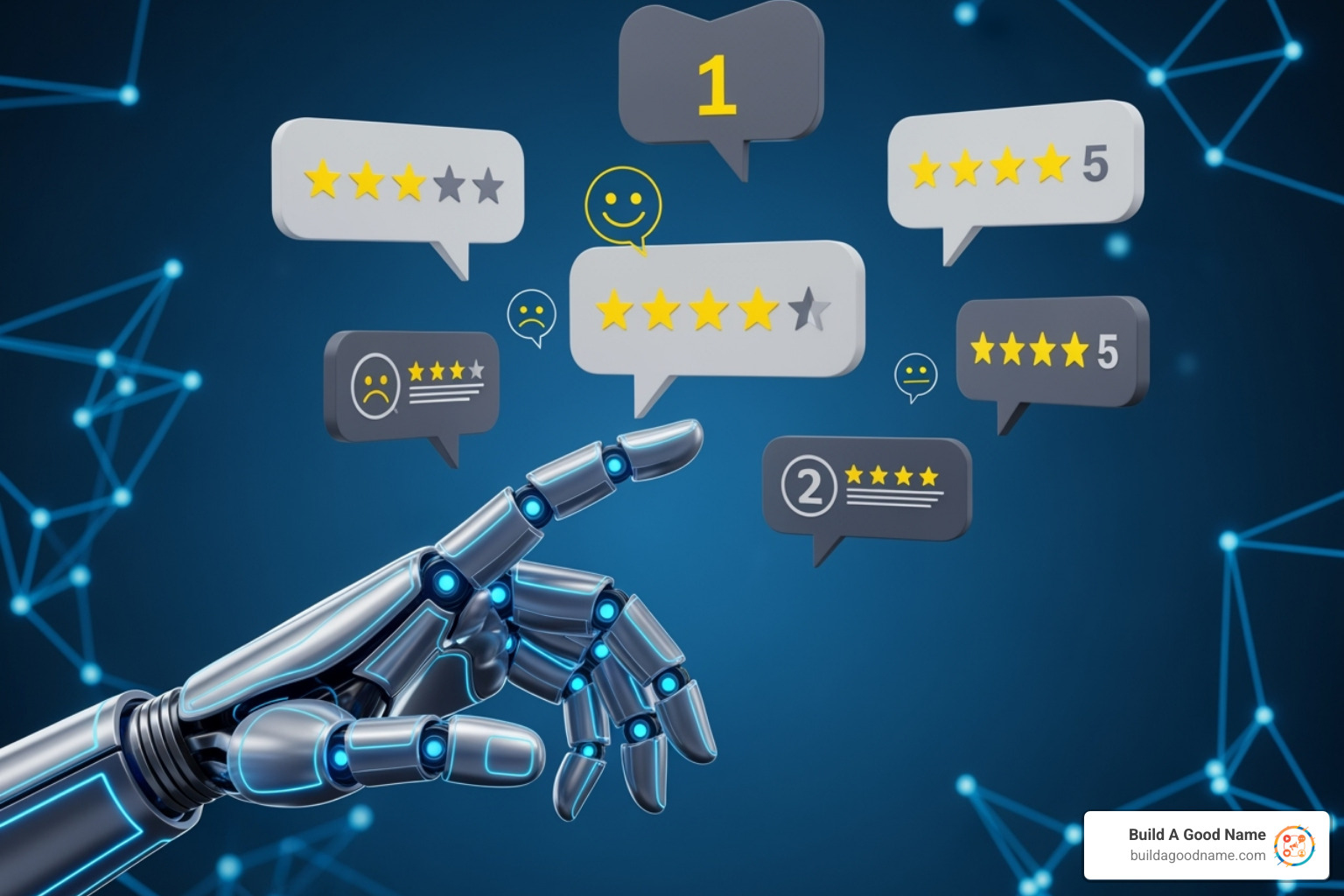Why Customer Trust is Your Most Valuable Asset
The Foundational Pillars of Lasting Customer Trust
When you build customer trust, you’re essentially constructing a three-legged stool. Each pillar supports the others, and if any one fails, the whole foundation crumbles. Let’s explore what makes these pillars so crucial for your business success.
Be Radically Transparent and Authentic
Picture walking into a restaurant where you can see straight into the kitchen. The chefs aren’t hiding anything—they’re proud of their work and want you to see exactly how your meal is prepared. That’s the power of transparency in business.
Transparency isn’t just nice to have—it’s a trust superpower. When you’re open about your processes, pricing, and even your mistakes, customers start believing you’re genuinely on their side. The numbers prove it: 94% of customers are more loyal to transparent brands.
Think about clear communication as your foundation. This means sharing your company values openly and actually living them every day. Skip the corporate jargon and speak in plain English. When you explain your pricing, make sure there are no hidden fees lurking in the fine print. Be upfront about what your products can and can’t do.
Authenticity means showing your human side. Share behind-the-scenes glimpses of your team at work. Introduce the people behind your brand. When you don’t know something, admit it. When you make a mistake, own it quickly and honestly.
Look at Ben & Jerry’s authentic messaging—they don’t just talk about their ice cream. They share their values, their political stances, and their commitment to social causes. It’s authentic because it’s real, not because it’s perfect.
Customers can spot fake corporate speak from miles away. They want to do business with real people who genuinely care about their needs. For more insights on building authentic connections, check out our guide on Why Reputation Management Matters for Your Brand.
Prioritize Data Privacy and Security
Here’s a sobering fact: 79% of customers are very concerned about how companies use their data. Your approach to data privacy can make or break customer trust before they even buy from you.
Data protection isn’t just about following rules like GDPR or CCPA—it’s about showing customers you respect them. Create a privacy policy that’s actually readable, not buried in legal jargon. Use advanced security technologies and make sure your team knows how to handle customer information properly.
Cybersecurity measures that build confidence include implementing secure payment processing, displaying security badges, and having a clear breach response plan ready before you need it. When customers feel their information is safe with you, they’re more likely to share it—and more likely to trust you with their business.
The key is being transparent about what data you collect and why you need it. Don’t collect information just because you can. Only gather what you actually use to serve your customers better.
Learn more about protecting your digital presence in our Digital Reputation Management guide.
Deliver with Unwavering Consistency
Consistency is the secret sauce of trust. It’s not about being perfect—it’s about being predictably good. When customers know what to expect from you, they feel safe doing business with you.
Consider Lego’s approach to precision manufacturing. They make each piece to a precision of under 0.0001 inches. This means a Lego brick from 1958 still fits perfectly with one made today. That’s the kind of consistency that builds lasting trust over decades.
Meeting expectations every single time means maintaining consistent quality across all your products and services. Use the same brand voice whether customers interact with you on social media, over the phone, or in person. When you promise a delivery date, hit it. When you set service standards, exceed them.
The data backs this up: 75% of customers desire a consistent experience across all channels. Whether they find you online, call your business, or visit in person, they want the same level of professionalism and care.
Quality control isn’t just about your products—it’s about every touchpoint. Keep your business information updated everywhere it appears. Train your team to deliver the same helpful service. Follow through on every promise you make.
For deeper insights on building long-term trust through consistency, explore our article on How Reputation Management Builds Long-Term Business Trust.
5 Actionable Strategies to Proactively Build Customer Trust
Now that we’ve covered the foundation, let’s dive into specific tactics you can implement today to build customer trust and keep it strong.
How to Build Customer Trust Through Excellent Service

Every time a customer reaches out to you, they’re essentially saying, “I’m giving you a chance to earn my trust.” How you handle that moment can make or break the relationship.
The secret to trust-building service starts with empathy. When 49% of customers want to talk to an empathetic agent, it’s clear that people want to feel heard and understood. Train your team to listen actively and validate customer feelings before jumping into solutions.
Speed matters too. Quick response times show respect for your customers’ time and urgency. Whether someone contacts you by phone, email, chat, or social media, they should get the same level of attention and care. This omnichannel approach ensures no customer falls through the cracks.
Here’s what really moves the needle: empower your team to solve problems without endless escalations. When agents can make decisions and offer solutions on the spot, customers feel valued and respected. Add in small gestures like follow-up calls or surprise bonuses, and you’ve created a memorable experience.
The personal touch makes all the difference. Use customers’ names, remember their preferences, and acknowledge their history with your business. When customers feel recognized as individuals rather than account numbers, trust deepens naturally.
It’s not just about fixing problems—it’s about how you make customers feel during the process. A customer who has a problem resolved with empathy and speed often becomes more loyal than one who never had a problem at all.
For more on leveraging service excellence for trust-building, read The Role of Reputation Management in Customer Trust.
Create Personalized and Emotional Connections
Trust isn’t just logical—it’s deeply emotional. Research shows that how customers feel about a brand has 1.5 times more impact than how they think about it. This means creating emotional connections is crucial when you want to build customer trust.
Think about brands that make you smile. They probably don’t just sell you products—they make you feel special. That’s the power of personalization done right. Use customer data to tailor recommendations, send personalized birthday messages, and remember past purchases. These small touches show you see customers as real people, not just revenue sources.
Building emotional bonds goes beyond transactions. Share your business story and values openly. Show genuine interest in customer success and celebrate their milestones. Create a community around your brand where customers feel they belong to something bigger.
Even in our digital age, people want to do business with people, not faceless corporations. Show the humans behind your brand through employee spotlights, behind-the-scenes content, and personal messages from leadership. When customers see the real people who care about their experience, trust grows naturally.
Community involvement and social responsibility also strengthen these connections. When customers see you contributing to causes they care about, they’re more likely to trust your intentions and values.
When customers feel an emotional connection to your brand, they’re more likely to forgive mistakes, recommend you to others, and remain loyal even when competitors offer lower prices. It’s this emotional foundation that transforms customers into advocates.
Find how to strengthen these connections through Boost Customer Loyalty Through Reputation Management.
Offer Loyalty Programs and Incentives
Loyalty programs do more than encourage repeat business—they demonstrate your commitment to long-term customer relationships. When done right, they become trust-building tools that show customers you value their ongoing partnership.
The statistics tell the story: 76% of consumers are more likely to choose retailers with loyalty programs. But it’s not just about the discounts—it’s about the feeling of being valued and appreciated.
Tiered benefits work particularly well because they reward your best customers with exclusive perks and recognition. Think beyond points and discounts. Offer personalized rewards based on individual customer preferences, surprise bonuses that create positive emotional experiences, and exclusive access to new products or special events.
The most successful loyalty programs make customers feel like VIPs. This might include exclusive content, educational resources, priority customer service, or invitations to special events. When customers feel special, they’re more likely to trust your recommendations and try new products.
Recognition and status within your community also build trust. Customers who feel acknowledged for their loyalty become partners in your success rather than just transactional buyers. They’re more likely to forgive occasional mistakes and defend your brand when others criticize it.
The key is making your loyalty program feel like a relationship, not a transaction. When customers see genuine value and appreciation, they naturally develop deeper trust in your business.
Leverage the Customer’s Voice to Build Credibility
Your customers are your secret weapon for building trust. Their authentic voices carry more weight than any marketing campaign you could ever create. When potential customers hear from real people who’ve experienced your service, magic happens.
Actively Solicit and Act on Customer Feedback
Asking for feedback isn’t just about collecting opinions—it’s about showing customers you genuinely care about their experience. But here’s the crucial part: you must actually do something with what you learn.
When you send surveys at key moments in the customer journey, you catch feedback while the experience is fresh. Keep these surveys short and focused. Nobody wants to answer 20 questions about buying a sandwich.
Make feedback easy to give through multiple channels. Some customers prefer email surveys, others might leave a quick voicemail, and many will share thoughts through social media. Meet them where they are.
The real trust-building happens when you close the feedback loop. Acknowledge every piece of feedback you receive, even if it’s just a quick “thank you.” When customers suggest improvements, let them know what changes you’re making. Follow up with those who took time to help you get better.
This creates something powerful: customers start feeling like partners in your success rather than just transactions. They become invested in seeing you improve because they played a part in that improvement.
For a systematic approach to managing all this feedback, check out our Customer Feedback Management guide.
How to Use Feedback and Reviews to Build Customer Trust
Reviews are the modern version of asking your neighbor which plumber they’d recommend. The difference? Now that conversation happens online for everyone to see.
Here’s something that might surprise you: nine out of 10 people trust what a customer says about a business more than what that business says about itself. That’s why customer reviews are pure gold for building trust.
Quantity and authenticity work together to create credibility. A business with 50 recent reviews feels more trustworthy than one with just 5, even if all 5 are perfect. Speaking of perfect scores, a mix of 4 and 5-star reviews actually appears more genuine than all perfect ratings. Real businesses have real customers, and real customers have varied experiences.
Detailed reviews pack more punch than generic ones. When someone writes three paragraphs about their experience, it carries more weight than “Great service!” That’s why encouraging customers to share specific details helps build trust with future customers.
The numbers don’t lie: 72% of consumers say positive reviews make them trust a brand more. But it’s not just about collecting reviews—it’s about creating an environment where customer voices are heard, valued, and celebrated.
Showcase these authentic voices prominently on your website. Share customer success stories in your marketing. Create case studies that highlight how you’ve helped real people solve real problems. When potential customers see themselves in these stories, trust begins to form.
For comprehensive strategies on managing this powerful trust-building tool, explore our Review Management for Local Businesses resource.
Respond to All Reviews—Especially the Negative Ones
Here’s a counterintuitive truth: how you handle criticism says more about your character than how you handle praise. A well-handled negative review can actually build customer trust more effectively than a dozen positive ones.
Quick, professional responses show you’re actively engaged with customer feedback. Aim to respond within 24-48 hours. This speed demonstrates that you take customer concerns seriously and aren’t hiding from problems.
When responding to negative reviews, stay professional and take responsibility. Never get defensive or make excuses. Instead, acknowledge the customer’s experience and offer specific steps to address their concerns. If the issue requires detailed discussion, invite them to continue the conversation privately.
Here’s what makes this so powerful: other potential customers are watching how you handle problems. When they see you respond with empathy and professionalism, they think, “If something goes wrong with my order, these people will take care of me.”
Turning negatives into positives happens when you demonstrate genuine commitment to customer satisfaction. A thoughtful response to criticism shows you’re willing to improve, you communicate professionally, and you truly care about customer experiences.
Your review responses aren’t just for the original reviewer—they’re for everyone who reads them. A single thoughtful response to criticism can convince dozens of potential customers that you’re trustworthy and committed to excellence.
For detailed guidance on crafting responses that build trust, check out our guide on how to Respond to Google Reviews.

How to Rebuild Trust When Things Go Wrong
Let’s be honest—mistakes happen. Whether it’s a delayed shipment, a billing error, or a service that didn’t meet expectations, every business will face moments when they let customers down. The difference between companies that build customer trust and those that lose it forever comes down to one thing: how they handle these challenging situations.
Here’s the surprising truth: customers who have a problem resolved quickly and empathetically often become more loyal than customers who never had a problem at all. That’s the power of turning a negative experience into a trust-building opportunity.
Own the Mistake and Apologize Sincerely
A genuine apology isn’t just about saying “sorry”—it’s about rebuilding the foundation of trust between you and your customer. When done right, a sincere apology can actually strengthen your relationship.
The anatomy of a trust-rebuilding apology starts with complete ownership. Don’t hide behind vague language like “mistakes were made” or “we’re sorry you feel that way.” Instead, clearly state what went wrong and take full responsibility. Use “we” statements that show your entire organization stands behind the apology.
Express genuine remorse by acknowledging the real impact on your customer. Maybe they missed an important meeting because your service was down, or they were embarrassed in front of their own customers because of your mistake. Show that you understand how your error affected their life or business.
Provide context without making excuses. There’s a fine line between explaining what happened and deflecting blame. Customers appreciate transparency about what went wrong, but they don’t want to hear about your internal problems or external vendors. Focus on what matters to them: what happened and how you’re fixing it.
Most importantly, outline your specific plan to prevent similar problems in the future. This shows customers that you’re not just sorry—you’re committed to doing better. Whether it’s implementing new quality checks, additional training, or system upgrades, let them know you’re taking concrete steps to improve.
Customers can forgive honest mistakes, but they rarely forgive cover-ups or insincere responses. Your apology sets the tone for everything that follows.
Communicate Proactively and Offer a Solution
When things go wrong, silence becomes your biggest enemy. Customers’ imaginations often create scenarios far worse than reality when they don’t hear from you. Proactive communication shows that you’re in control and working on their behalf.
Start communicating early, even if you don’t have all the answers yet. Let customers know you’re aware of the problem and actively working on it. A quick “We see the issue and are investigating” message buys you time and shows you’re responsive.
Provide regular updates throughout the resolution process. Even if there’s no new information, touching base shows you haven’t forgotten about them. Set expectations for when they’ll hear from you next, then follow through on that promise.
Make it easy for customers to reach you with questions. Offer multiple communication channels—phone, email, chat, or social media. The last thing you want is a frustrated customer who can’t get through to you while you’re trying to rebuild trust.
When it comes to making things right, think beyond just fixing the immediate problem. Fair compensation for the inconvenience is important, but consider offering additional value that shows you truly care about their experience. This might be a discount on future services, a complimentary upgrade, or priority support.
The key is following through on every promise you make. If you say you’ll call back in two hours, call back in two hours. If you promise a refund within three business days, deliver it in three business days. Consistency in your recovery efforts rebuilds the reliability that was damaged by the original mistake.
When customers see you handling a crisis with transparency, speed, and genuine care, they often walk away more impressed with your character than they were before the problem occurred. This is how you transform a trust-breaking moment into a trust-building opportunity.
For more insights on protecting your reputation during challenging times, read Why Reputation Management Matters for Small Businesses.
Frequently Asked Questions about Building Customer Trust
What is the single most important factor in building customer trust?
If I had to pick just one thing that makes or breaks customer trust, it would be consistency. Think about it—you probably have that one friend who always shows up when they say they will. That’s the friend you trust most, right?
Building customer trust works the same way. It’s not about pulling off one amazing customer service miracle (though those are nice). It’s about being reliably good, day after day, interaction after interaction.
Your customers need to know what to expect from you. When they visit your website, will it work smoothly? When they call with a question, will someone helpful answer? When they buy your product, will it do what you promised? Consistency across all these touchpoints is what transforms casual customers into loyal advocates.
The beautiful thing about consistency is that it doesn’t require perfection. You don’t need to be the cheapest or the fanciest—you just need to be dependably good at what you do.
How long does it take to build trust with customers?
Here’s the honest truth: building customer trust takes time, but losing it happens in an instant. It’s like growing a tree—months or even years of careful tending can be destroyed by one bad storm.
Most customers need to see about 10 reviews before they trust a new business. They want to know that other people like them had good experiences. And even after that first positive interaction, they’re still watching to see if you’ll deliver consistently.
The trust timeline typically looks like this: First, you earn their attention with a good first impression. Then, you earn their confidence through reliable service. Finally, after several positive experiences, you earn their loyalty and recommendations.
But here’s what’s encouraging—every positive interaction builds momentum. That customer who was skeptical after their first purchase might become your biggest fan after their third. The key is staying patient and consistent throughout the process.
Can you build trust with a fully automated or online business?
Absolutely! Some of the most trusted companies today are primarily digital. The secret is making your automated systems feel human and helpful rather than cold and impersonal.
Online businesses can build trust through crystal-clear communication. Your website should answer questions before customers even ask them. Your policies should be easy to find and understand. Your checkout process should feel secure and straightforward.
Social proof becomes extra important in digital environments. Customer reviews, testimonials, and ratings help new visitors feel confident about choosing you. When people can’t shake your hand or look you in the eye, they rely on what other customers say about you.
Security and transparency are non-negotiable online. Display your security badges, make your contact information easy to find, and be upfront about your pricing. When customers feel their information is safe and they know exactly what they’re getting, trust follows naturally.
The beauty of online business is that you can actually be more transparent than traditional businesses. You can share customer reviews, detailed product information, and clear policies 24/7. Many customers prefer this level of openness and convenience.

Conclusion: Make Trust the Core of Your Business Strategy
Building customer trust isn’t something you check off your to-do list once and forget about. It’s more like tending a garden—it requires daily attention, consistent care, and a long-term vision of what you want to grow.
Think about it this way: every single interaction your business has with a customer is either building trust or chipping away at it. The quality of your products, the warmth in your customer service representative’s voice, the clarity of your pricing—it all adds up to create your reputation.
The businesses that truly thrive today understand something important: building customer trust goes far beyond just avoiding complaints. It’s about creating experiences so positive that customers can’t help but tell their friends about you.
Your Trust-Building Foundation
The most successful businesses make trust the cornerstone of everything they do. They know that consistency builds confidence—when customers know what to expect from you, they feel safe choosing you again and again. Transparency creates genuine connection because people want to do business with companies that are honest about their processes, pricing, and yes, even their mistakes.
Empathy drives real loyalty in ways that discounts and promotions never can. When customers feel truly understood and cared for, they stick around through thick and thin. Feedback becomes your fuel for improvement when you actively listen to what customers are telling you and show them their voices matter. And here’s something many businesses miss: recovery can actually strengthen relationships when you handle mistakes with grace and genuine commitment to making things right.
The Long-Term Payoff
The effort you put into building trust today creates a snowball effect that grows stronger over time. Trusted businesses enjoy customers who stay longer, refer more friends, forgive occasional mistakes, and willingly pay premium prices because they value the relationship.
In our digital world, your online reputation often forms that crucial first impression. This is where managing your online presence becomes essential. When potential customers search for your business, what they find needs to reflect all the trust-building work you’ve done.
This is where tools like Build A Good Name’s AI-powered software become invaluable. They help you efficiently manage reviews, respond thoughtfully to feedback, and ensure your hard-earned trust shines through in your online presence. Because let’s face it—you shouldn’t have to choose between running your business and managing your reputation.
The Simple Truth
Here’s what it all comes down to: trust is earned drop by drop, but it can be lost in a flood. Every phone call, every email, every product delivery is an opportunity to strengthen the trust your customers have in your business.
Make each interaction count. Your future success depends on it.
Ready to build a five-star reputation? Learn how to generate more Google reviews today!




